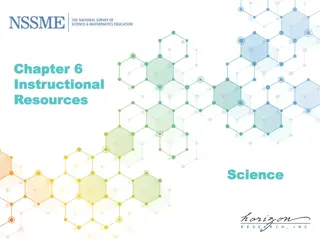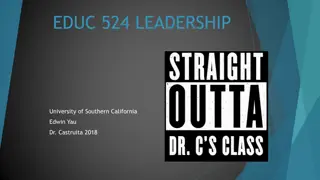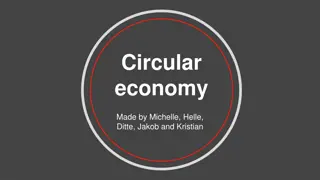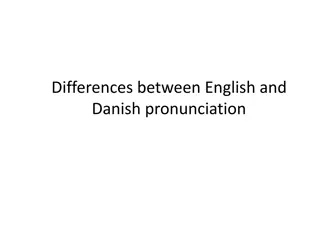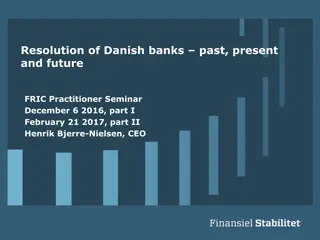Exploring Shared Instructional Leadership in Danish Schools
This study delves into how principals implement shared instructional leadership in Danish primary and lower secondary public schools, aiming to enhance dialogue on its potential in diverse cultural contexts. The Danish educational landscape, emphasizing autonomy and democratic participation, poses challenges amidst accountability pressures. Principals play a crucial role in defining school missions, promoting student achievement, and fostering a culture of continuous improvement through effective instructional leadership strategies.
- Instructional Leadership
- Danish Schools
- Educational Culture
- Accountability Pressures
- Student Achievement
Download Presentation

Please find below an Image/Link to download the presentation.
The content on the website is provided AS IS for your information and personal use only. It may not be sold, licensed, or shared on other websites without obtaining consent from the author. Download presentation by click this link. If you encounter any issues during the download, it is possible that the publisher has removed the file from their server.
E N D
Presentation Transcript
Shared Instructional Leadership in Practice - Danish School Leaders between Egalitarian Culture and Accountability Pressures Ronni Laursen, Sedat G m s & Alan Walker 16. November, 2023 UCEA
Aim of the Study We aim to explore how principals work with shared instructional leadership in Danish primary and lower secondary public schools By doing that we target that the study contributes to the ongoing dialogue about shared instructional leadership s potential in diverse cultural settings.
The Danish Context 78% of Danish children enrolled in the public school system Includes primary and lower secondary schooling Optional grade 10 available Three levels of governance Parliament designs and adopts education legislation 98 municipalities responsible for running schools Principals have the autonomy to build unique culture
The Danish Context: Culture and Leadership Expectations Danish culture values equality, autonomy, and work- life balance Community, trust, and transparency are valued in relationships Danish schools have a flat organizational structure Principals prioritize democratic participation and staff and student well-being High levels of trust and transparency in decision-making Recent education reforms have challenged traditional roles Increased emphasis on decentralization, accountability, and student achievement
Defining the school mission Principal's role in establishing school's core purpose Collaboration with staff to focus on student achievement Communicating academic progress goals to stakeholders Theory and Background: Instructional Leadership Managing the instructional program Principal's responsibility for coordinating and controlling instruction and curriculum Requires expertise in teaching and learning Debate on focus on control instead of development of teaching staff Creating a positive school climate Rising student achievement through culture of continuous improvement Incentives to support improvement culture Principal modeling relevant values and practices
Shared instructional leadership responds to criticism of top-down approach Empowered teachers influence achievement of organizational goals Collaboration between leaders and teachers to improve student achievement Theory and Background: Shared Instructional Leadership Builds on ideas from transformational, distributed, and instructional leadership Communicates clear instructional vision Instructional expertise situated across school's social and situational context Four key elements: shared visions, focus on instruction, monitoring of progress, broad collaboration Participatory structures and processes
Data and Methods 18 Interviews Conducted in three selected schools during the 2021-2022 academic year Semi-structured format Questions about background information, governance, student achievement, school culture, and leadership Document analysis of 12 policy documents Comprehensive reports on leadership, culture, and learning Smaller leaflets explaining schools' approach to learning, teaching, and data collection Review of schools' websites Focus on how documents articulated schools' visions, particularly in the context of learning and school culture
Data and Methods: Analysis First Round of Coding Comparing and analyzing data from interviews Comprehensive review of transcripts Development of preliminary data overview Second Round of Coding Theoretical scrutiny of initial codes Focus on leadership practices intertwined with teaching and learning Generation of preliminary categories of leadership practices Final Stage Review of codes Focused and systematic analysis of data Aggregation of data analysis into coherent clusters
Three Major Findings 1) Inside the engine room 2) Reflection as a Means of Professional Development 3) The Need for Collaboration
Inside the Engine Room The teachers are the experts in Well, they don't do that [supervise daily teaching, and therefore we [the teaching practices], though. But I'm not leadership sure if it's a good idea either. I mean, team] let them perform the teaching which is because... If it's been 25 years since best they were last in the classroom, then suited to their case. (Principal at School 1) what help can they provide me with?
Reflection as a Means of Professional Development We [the school leadership team] have then set a requirement that they [teachers] must accommodate - a team meeting must schedule 45 minutes for reflections on their teaching practice. And then, we work in learning circles by saying, What kind of data do we have difficulty with here? Then we reflect and encourage the respective employees that reflect on his/her practice to try to come up with ideas for solving the problems. (Principal at School 1)
The Need for Collaboration I collaboration in our teams, where you share the vision and become a little better at saying this is actually our professional approach instead of leaving that responsibility to the individual teacher. So, my vision is that no matter who starts in our school, I can ensure they get the best possible course. That is, it is not luck if you just got Carl as a teacher or Sofie as a teacher. (Principal at School 2) would like to see stronger
Conclusion Shared Instructional Leadership in Danish Schools Leaders influenced by accountability policies for student learning outcomes Similar structures despite variation in socio-economic composition and exam grades Responsibility shared with middle leaders and key teachers Egalitarian culture Behind-the-Scenes Leadership Organizes teacher practices towards student learning outcomes Shared responsibility in organized process Feedback informs leader decisions Professional Development Organized in teams for reflection
Time for Comments, Feedback and Questions Ronni@ikl.aau.dk








